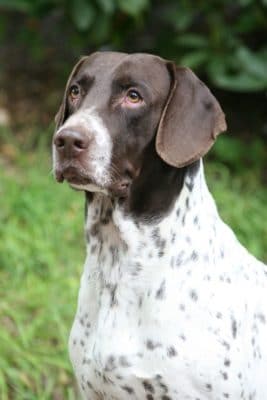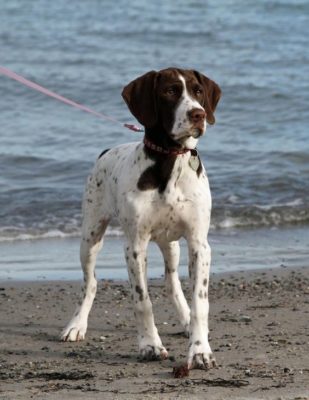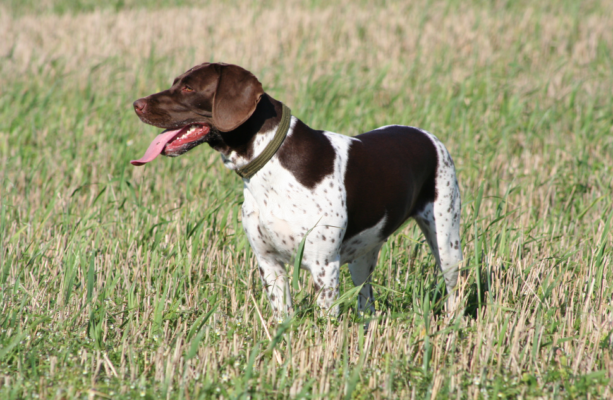Old Danish Pointer
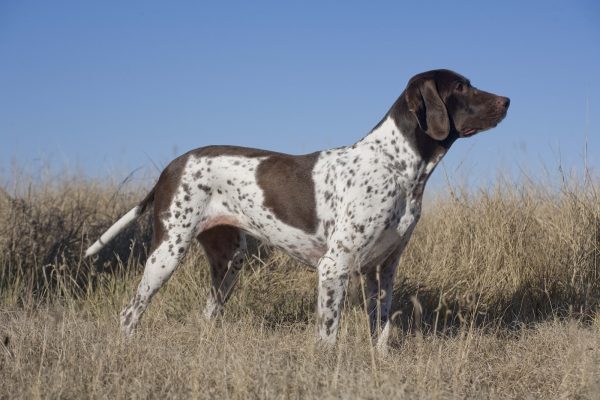
The Old Danish Pointer is a calm dog with a balanced temperament. Representatives of the breed are somewhat slow and unhurried. These pointers are distinguished by loyalty to the owner and family in which they live. Old Danish Pointers are often used not only for hunting but also for protecting the home or territory.
Table of Contents
Breed Information
| Another Name | Gammel Dansk Hønsehund, Old Danish Bird Dog |
| Origin | Denmark |
| Height | Males 54-60 cm Females 50-56 cm |
| Weight | 26-35 kg |
| Fur | Short |
| Color | White with light or dark coffee spots |
| Lifespan | 12-14 years |
| FCI Classification | Pointing Dogs |
| Group | Hunting dogs, apartment dogs, dogs for kids, guard dogs |
| Price | $400-900 |
Breed Photos
Origin History
The Old Danish Pointer first appeared in the 18th century. This breed is the result of a cross between the Bloodhound and the Spanish Shorthair. The Old Danish Pointer was bred by the breeder Mortin Buck. The breed standard was adopted in 1962 by the Danish Kennel Club.
Outside of Denmark, the Old Danish Pointer is not a popular breed, but in their historic homeland, these dogs can be found often. They are good hunters, sought after for their flair, speed, and agility. The Old-Rodat dog is excellent not only at catching prey but also as a companion.
Appearance
The Old Danish Pointer is a dog on sturdy legs of medium length. On the hind limbs are visible jumping joints. The neck of representatives of this breed is long; there is a small size suspension. The body is slightly elongated. The old-school pointer has a broad and powerful chest. Old Danish Pointers are distinguished by a strong loin and a straight backline.
The pet’s head is wide at the parietal. The muzzle of the dog is of medium size. Old Danish Pointer with slightly saggy lips, the preferred color of the nose lobe is liver. Rounded light or dark brown eyes of medium size. The tail of representatives of this breed is downward, tapering toward the end.
The Old Danish Pointer is a short-haired dog. The hair is thick and very dense. Because of this, the skin is protected from damage during the hunt. The color standard is white with mottles or coffee spots.
Character
The Old Danish Pointer is a calm dog with a balanced temperament. Representatives of the breed are somewhat slow and unhurried. These pointers are distinguished by loyalty to the owner and family in which they live. Old Danish Pointers are often used not only for hunting but also for protecting the home or territory.
Pets are great with children. Representatives of this breed are suitable for both novice dog breeders and experienced professionals. They are quiet animals with a calm, peaceful disposition. Old Danish Pointer gets along well with other pets, especially with early socialization.
Care
It is possible to keep an Old Danish Pointer in apartment conditions. However, its need for long walks should be taken into account. Fresh air and exercise are needed to keep the dog’s body in good shape.
Few walks can cause obesity and other health problems. Your pet’s hair should be brushed once a week. As it gets dirty, wipe the hair with a damp cloth. Be sure to monitor the condition of the pet’s claws. Sharpen them or trim them as needed. Use treats or gets a four-legged toothbrush to remove bad breath. Clean dirt from your pet’s ears and eyes regularly.
Training
The Old Danish Pointer learns commands quickly and easily. The high level of intelligence and loyalty to the owner have a positive effect on the four-legged dog’s training. The characteristic difference of the breed from other hunting breeds is persistence. When the Old-Rodat dog smells a trail, it is 100% likely not to lose it.
Start training with basic commands. Once your puppy has mastered the simple tasks, go on to the more complex exercises. Make it playful, so he becomes more interested. Don’t forget to reward your dog when he’s successful.
Common Diseases
The Old Danish Pointer is a pet with good health and immunity. Common diseases:
- an open lower eyelid;
- hip dysplasia;
- diseases of the eyes and ears;
- allergies.
Parasites can develop in your pet’s eyes and ears. To prevent such problems, clean them regularly from accumulated dirt. As with all hunting dogs, the Old Danish Pointer may develop musculoskeletal problems over time. Watch your dog’s diet to prevent them.
Nutrition
The Old Danish Pointer does well when fed ready-made dry mixes. They contain a standard set of micronutrients necessary for the normal functioning of the body.
It is much better to feed your natural dog food. Give fresh fruits and vegetables to replenish vitamins. Dairy and fermented milk products are a source of calcium, essential for strong bones. Kashi, fish, and by-products are needed for protein, acids, and phosphorus.
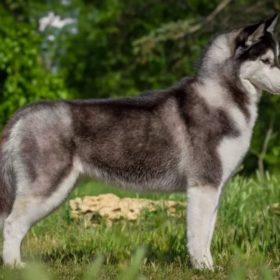 Jämthund
Jämthund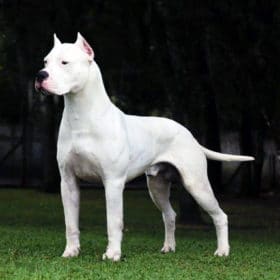 Dogo Argentino
Dogo Argentino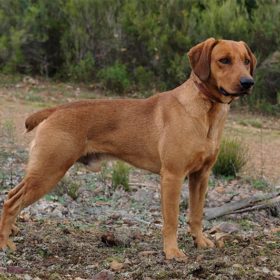 Segugio Maremmano
Segugio Maremmano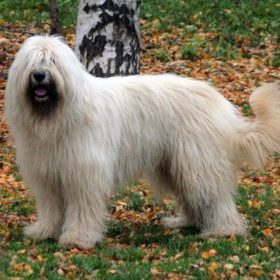 South Russian Ovcharka
South Russian Ovcharka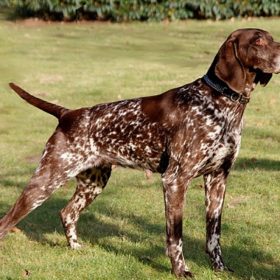 German Shorthaired Pointer
German Shorthaired Pointer Lithuanian Hound
Lithuanian Hound